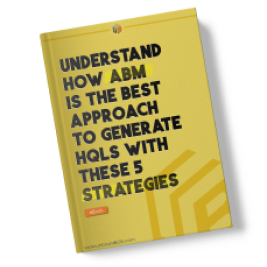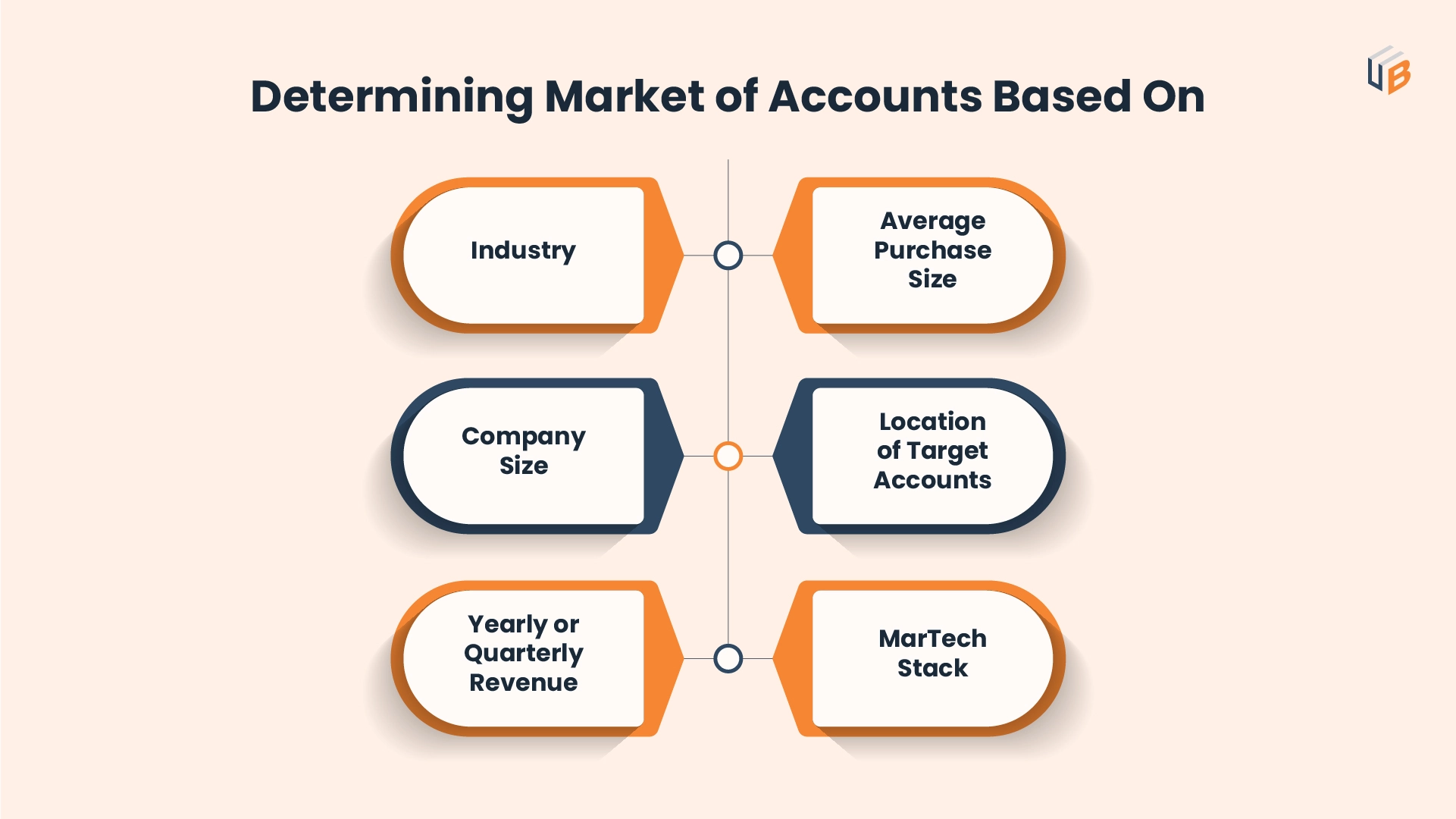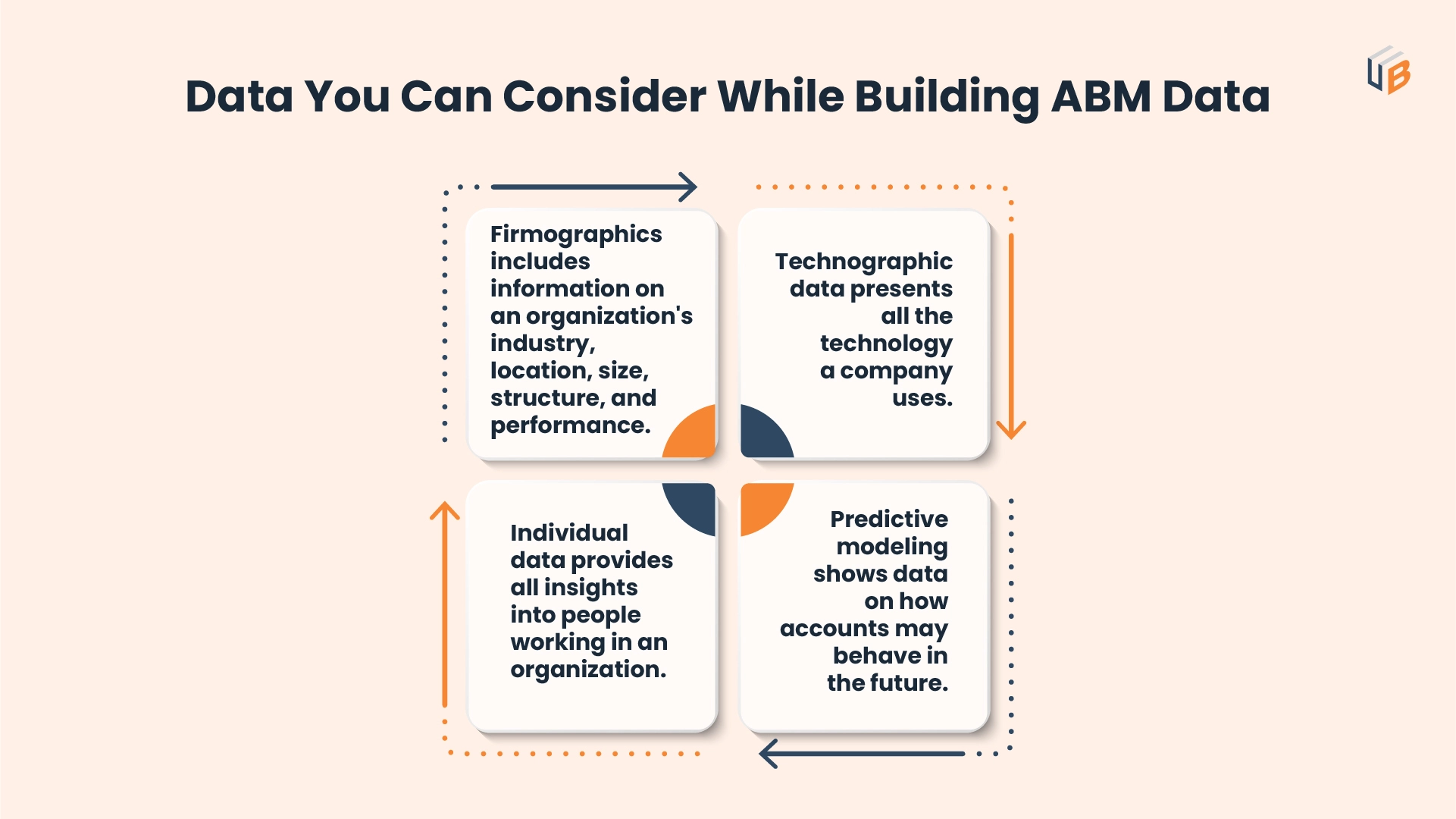
There is a rapidly growing demand for ABM data as the focus on personalized marketing is more prevalent than ever. Most companies are choosing to implement ABM strategy and divert their budgets to it.
As per LinkedIn, 80% of the marketers intend to increase their budgets for ABM. The reason is that ABM increases marketing revenue by 208%.
However, the thing with personalized marketing is that you require data to send customized messages to create a need. Businesses usually keep a product-first approach which means rather than researching customers and their needs, they attract clients who require their products the most.
This filters out the possibility of maximum sales and greater revenue. This is why marketers focus on building their ABM data.
Let us first see why ABM is an ideal approach.
Why is ABM an Optimum Strategy?
Implementing the ABM strategy comes with multiple benefits. Here are some of them,
1. Enhanced ROI
ABM assists marketers in focusing their sales and marketing efforts to target specific accounts with marketing messages. This saves time, high costs, and effort. These targets have the capacity to generate better returns as compared to traditional marketing. This way your resources are used in an efficient and cost-effective way.
2. Improved Brand Awareness
In ABM, you target specific accounts by engaging with them on a personal level. This helps create brand awareness and loyalty over a period of time. It will lead to customers coming to you first when they need a specific product or service rather than exploring competitors. Thus you get enhanced brand awareness and customer retention at the same time.
3. Shorter Sales Cycle
Since unqualified prospects are eliminated at the beginning of the process, it speeds up the sales cycle. This leaves you with the most qualified accounts that are likely to convert. So the marketing and sales team can focus on these accounts to give them personalized experiences.
4. Better Opportunity for Growth
Account-based marketing opens the door for strategic growth that wasn’t otherwise possible for an organization. It focuses on limited accounts increasing the chance of conversion. Also with limited accounts, marketers have better efficiency in engaging with them. This helps save costs, increase efficiency, and boost profitability.

Why can ABM Fail?
Implementing all the stages of ABM strategy comes with its own challenges, here are some factors that can affect your business negatively,
1. Lack of Top-Down Support
With less support from the top and a lack of expertise in the team, your ABM strategy may fail. This lack of resources can delay the progress and you will see lower results. Also, ABM programs take a while to show efficient results, and if you lack patience, ABM can be quite overwhelming.
2. Inadequate Target Data or Insight
Most of the ABM strategies are successful because they identify companies that require your services the most. Identifying these businesses needs deep knowledge and understanding of the target audience and their correct data. You need to identify patterns relating to demographics, firmographic, technographic, and engagement data. If you have insufficient ABM data and knowledge your strategy may fail.
If you are looking to implement ABM in your business, reach out to UnboundB2B for successful ABM strategies!
3. Differences Between Sales and Marketing
For a very long time, sales and marketing teams have been working independently. Marketing works on the agenda of bringing as many leads as possible and sales work on closing them. ABM works effectively when marketing and sales work together as a team to bring in companies that match the ideal customer profile. If they don’t work in alignment, there is a big chance that the strategy will fail.
4. Insufficient Tracking or Analysis
Analyzing your ABM is the only way to know if it is performing. There is a huge challenge in front of you if you don’t know how to measure and track the progress. A few benchmarks include engagement, size of the deal, onboarding, and upselling. If you are not tracking and measuring all these benchmarks, there is a fair chance you won’t know where you are going wrong.
7 Steps to Build Data for Effective ABM
Now that you know how you can fail in an ABM strategy and the factors that prove that ABM is an effective strategy. There is one thing throughout this article that is ABM data and the outcome of not collecting it ideally. Here are seven easy steps in which you can build data for ABM success:
1. Make Clear Goals
Making clear goals, KPIs, and communication are three essential parts of building effective ABM data. Whether you are trying to improve lead generation or any opportunity to accelerate the pipeline. Each of these different goals yields different KPIs and tactics. So it is crucial that your team agrees on a goal, so you can collectively work on it.
Also, ABM metrics and KPIs serve as a path that can lead you to the important areas of business that need focus. Once you finish making goals, you can take help of new marketing techniques and approaches to making things simple for you.
2. Determine the Market of Target Accounts
The heart of any ABM strategy is the accounts themselves. They are the most crucial element of ABM data as they are prospects whom you will target in the future. When considering who you want to target, keep in mind the target personas. You can identify characteristics based on

Another aspect that marketers can consider is intent data. Intent data can tell you about your customer preference, and previous purchases. So you can determine high-intent clients and divert them straight to sales and low-intent clients to nurture campaigns before your competitors make a move.
3. Align Marketing and Sales
We have spoken about it time and time again that marketing and sales teams shall be aligned. It takes most of the time and effort in building ABM data to align these teams. So as a healthy practice, keep it continuous.
The benefit here is all the key members will be on the same page with the vision and will set expectations regarding expected returns, workflows, and roles in the same.
4. Classify the Data to Get Started
Now it is time to which type of data you will need to collect that will bring out the most benefits from your specific ABM needs. It will require thorough research but you will have high-quality ABM data.

Moreover, you will also need to know about business structure data which includes information about the hierarchy and decision-makers in an enterprise. Lastly, you won’t be able to reach your prospects if you miss contact data.
5. Identify How to Collect Data
Some of the ABM data can be collected internally from team members or otherwise from your existing CRM. But is also pivotal to find the areas where you require more information and fill in all the data. You can achieve that by partnering with other organizations that have access to such quality data.
Another way to collect data is to use first-party cookies about anonymous prospects who are visiting your website. Nurture Prospects who have visited your high-value pages on the website for account-based marketing as they are familiar with your products or services.
6. Set Up CRM to Support ABM
Make sure you have the MarTech stack to support your ABM strategy, especially your CRM. This should be a reliable center for all your sales and marketing data needs.
If your CRM is not robust in its current form, you can put integrations that can cover other aspects like account mapping, data enrichment, ad targeting, and predictive analysis.
Another way is to combine your first-party and third-party data in your CRM, you can run a successful ABM strategy.
7. Measure And Analyze the Data
Every ABM campaign and strategy has to go through testing to become flawless. Your workflow should have a QA process that can analyze ABM data and make adjustments accordingly. This always going to be an ongoing process as you measure and adjust the ABM data, and then test it. Since the process is repetitive in nature, the more engaged your team is in the process, the improved results you will get.
Long Story Short
ABM has become marketers’ top choice in recent times due to its low cost, better ROI, and growth opportunity aspects. However, if proper caution is not taken, your ABM strategy can fail. To make sure, your strategy is a success, you have to be up-to-date with your ABM data. From identifying your goals to having an efficient CRM, you will need to take sufficient measures to make sure your ABM strategy is a success.
Find a tailored ABM strategy with UnboundB2B’s ABM Solutions that best suits your business and delivers the results you need.
Our blog
Latest blog posts
Tool and strategies modern teams need to help their companies grow.

Video has emerged as one of the most effective tools to cut through the noise and con...

The way B2B buyers research, engage, and decide has changed and so must the way marke...

Channel marketing helps B2B companies grow by partnering with third-party sellers. It...






